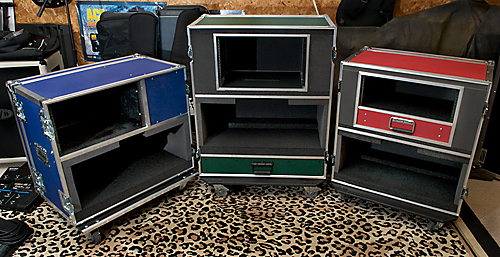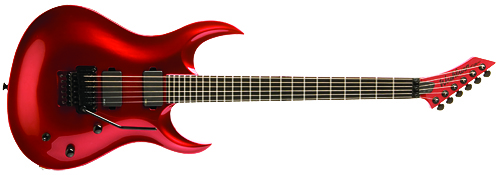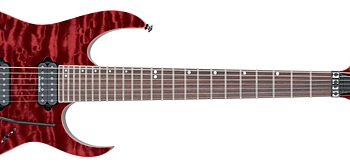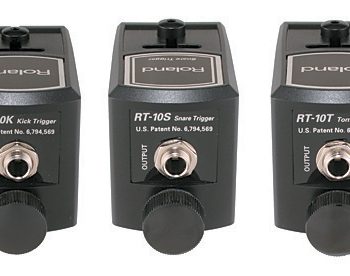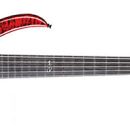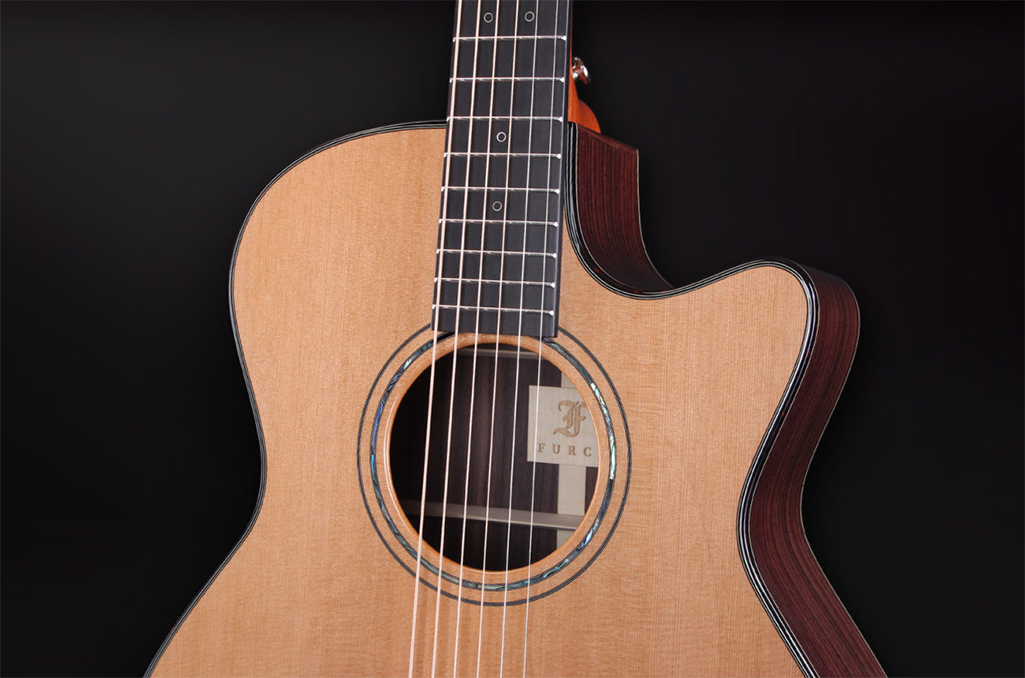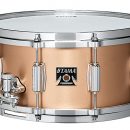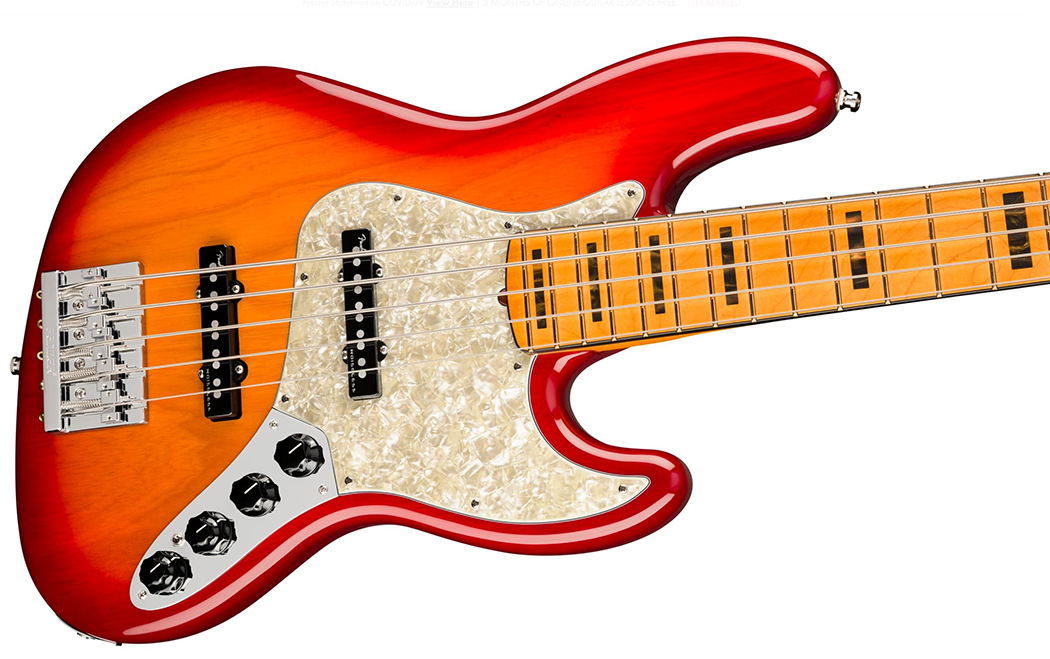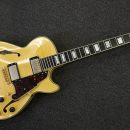Musicians gigging at the local level just don’t have their shit together. No, we don’t mean your skill, tone, or attitude. We mean your gear! You’ve got your amp combo or half-stack, a pedal board, and perhaps a rack with additional gear. Typically you’ve only got ten minutes to get it all hooked up and hope that you don’t mess up any of the connections in the process, or accidentally adjust any of the knobs or switches on your amp.
On the flip side of the spectrum, the pro-level guitarist has all of his equipment elegantly packaged in heavy-duty racks facilitating hookups in a matter of minutes… and they have hours to set up for the show! And roadies doing the work! This just doesn’t seem fair, does it?
There are numerous companies making elegant case solutions for pro guitar players that let you combine your head (or heads) along with rack gear and storage into a single case. For this review, we set out to compare amp/rack combo cases from a few well-known builders: Calzone/Anvil, Maxline, and Rock Hard.
Because these cases are custom built to order, we left all ratings out of this review. If one case in this review has a feature you prefer, there’s a good chance you can order a case built that way from any of the other builders. After all, with this product, you can custom spec it to meet your needs exactly.
We spec’ed out pretty typical cases that would hold a single amp head, provide six rack spaces for gear, and provide storage for miscellaneous accessories (or pedals). Rather than specifying all of the minute details, we had the cases built according to each builder’s typical configuration to get a feel for what their routine construction effort is like.
Each of the builders provided us with very solidly built cases that met our needs, but they were all built differently enough from one another to inspire heated debates among our editors as to the right combination of features.
Although cases like these add considerable bulk to your setup, and require two people to move, the benefits are tremendous. Your setup time gets cut down to a minute or less — even for complex rigs with rack gear and pedals, and you never have to worry about patching your gear together on a dimly lit stage.
You’ll find that different builders have a particular style to their typical designs that may work better or worse for your own particular requirements, but after reading about these products and looking at the detailed photos, we’re sure that you’ll have a great idea what to look for when you spec out your next, or first, amp/rack combo case.
Features
We began by supplying the dimensions of our amp heads for the review to each of the manufacturers and choosing typical options such as storage space and color. Each manufacturer has a preferred “typical” storage solution for their amp/rack combo.
Calzone placed their rack to one side of the case, reserving the space to its side for miscellaneous storage open to the rear of the case, and thus cutting down on the height of the case. Maxline built a drawer into the bottom of the case that ran across the entire width of the case, and Rock Hard installed a 19” wide drawer (with a lid) into the middle/centered rack space.
Rack Case Dimensions
| Width | Depth | Height | |
| Calzone | 31.5” | 16.25” | 32” |
| Maxline | 31” | 14.5” | 41.75” |
| Rock Hard |
28.75”
|
14.75” | 34.75” |

All of the cases were constructed from 3/8” plywood, covered in ABS laminate, and were built to standards higher than the actual ATA (Airline Transportation Association) specifications. These heavy-duty cases are heavy — expect them to weigh in the 75 to 100 pound range empty (with the covers On). Our Calzone case had a nice blue covering, the Maxline case shipped in a dark green, and the Rock Hard case came to us in a bright red finish. Ironically, we hear that the hot color these days from some of the case companies is white, but we’re not looking for our gear to look battered and worn that quickly!
All of the builders have different “little things” that they do that differentiate their products. For example, Calzone goes one step further than many builders by conforming to, and then exceeding, numerous military specifications for vibration resistance, temperature stability, and resistance to molds and fungus.
The rivets around the edge of the Rock Hard case are more than just cool looking studs. They run all the way through both the aluminum and the wood to the opposite side for tight fastening, though this “trademark” technique of their creates an apparent bubbling in the continuity of the metal edges that some players may not care for appearance-wise.
All cases have wheel boards that extend slightly beyond the front and rear of the rack so that there is some support for resting the covers as you install or remove them — essential given that the covers themselves are quite heavy.
Latches on all three racks were extremely heavy duty, and the cases each featured robust 3” wheels (3.5” on the Calzone case). While there were quick-set locks on a pair of wheels for the Maxline and Rock Hard cases, there were no locks on the wheels of our Calzone case (our fault — we didn’t specify this on the order, though locks were there by default on the other cases).
The case cover from Calzone was slightly deeper than the other cases, and its foam lining is scooped out to provide room for gear that extends beyond the front or back edge of the case. The covers on the Maxline and Rock Hard cases are filled with solid foam that presses up to the face of your mounted equipment.
One. Two. Three. Lift. No matter how you slice it, you’re not going to carry one of these cases up a flight of stairs by yourself (or load it into your car for that matter). Even with the strength of a power lifter, the cases are bulky to handle alone. And once you load your head and some gear, expect these cases to weigh in at well over 100 pounds. Of course, this may vary greatly based on the amp you use. Our Mesa/Boogie Road King heads are nearly 75 pounds alone, while a solid-state head may weigh less than 20 pounds.
Most of these cases were too tall to fit upright into the back of a typical sport utility vehicle, though the lower clearance of the Calzone case made it more practical in that transportation situation. All of these cases would be at home in a pickup truck, trailer, or van, however.
With their front and rear covers installed, these cases are quite bulky, but when the covers are removed, they aren’t much deeper than the gear they protect.
All of the cases held our heads securely, and both the Maxline and Rock Hard cases had additional foam inserts behind the amp head to help keep it in place (though in the event of a spill, we can’t be sure just how well that extra foam will hold up against a heavy tube head). All of the manufacturers installed heavy-duty, spring-loaded, recessed handles on each side for you and a friend to enjoy.

Calzone
We really liked many elements of the Calzone case’s design. Its additional inch of depth over the other cases made a great difference in loading some deep gear (like a rack shelf), and its scooped-out front and rear covers ensured that we could easily mount the doors with plenty of cables extending behind our gear, and without disconnecting accessories in the front. This was especially convenient since it meant we didn’t have to remove the front-mounted antennas from our wireless guitar systems (as we did with the other cases).
Also, the Calzone case was drilled with a large convenience hole through the rear of the plywood that separated the top of the case from the bottom, making it easy to pass cables through from the rack area to our head in the space below.
The storage space to the side could be useful for a variety of things — but we haven’t decided how to best utilize it yet. We could easily add a shelf/divider to make it multi-functional (like having some pedals on the bottom and storing some spare tubes and cables above).
Unfortunately, the heavy-duty wheels lacked any sort of locking mechanism, so hopefully we won’t have to play any gigs while perched on a sloping hillside.

Maxline
With the Maxline case, we loved their approach to storage! They built a padded drawer into the bottom of the case that ran from end to end, and it provided enough width and height to store everything from accessories to full-sized MIDI foot controllers (like a G-System, Ground Control Pro, or FX1). However, surprisingly absent was a cutout to pass cables into the drawer in case we wanted to use it for pedals. Click here to see the drawer...
The foam liner behind the amp was a little too thick to set our amp completely inside the case — the knobs and face of the amp extended slightly in front of the case until we cut out some of the extraneous foam. While the foam-lined cover ensured a perfectly snug fit in transit, it made it easy to mess up some of the knob settings on the front of our amp, and if we didn’t remember to unplug the cable from our amp’s input jack, we could easily break it at the contact point.
[Tip: Use a cable with a right-angle plug if the head’s input is wired to your rig. If you’re plugging your instrument cable from a guitar into the front of the amp this isn’t an issue.]
We also had to remove the antennas from our wireless receiver before putting the case cover on the rig. In the future, we’ll probably cut out chunks of the foam so that we can leave some of our rig features in place.
Unlike the Calzone case, there was no cutout to pass cables through from the rack space to the amp below. The problem with this is the fully-lined foam case covers. If our cables all pass behind the case running from the rack area to our head below, putting the cover on could eventually break our cables as they are pressed against the metal edge of the plywood shelf that separates the top of the case from the bottom. Drilling a hole for your cables will require some careful work as there is foam lining both above and below the plywood shelf.

Rock Hard
Rock Hard rocked a little lighter than the others when it came to their design, getting some things right and some things a little off in our book. They built their drawer conveniently into the rack area, and the drawer featured a cable pass-through in the rear so you can load it up with effect pedals. There was also a lift-up cover for the drawer, though we found that to be completely redundant in the design, and it also necessitated pulling the drawer out completely in order to access its contents.
Surprisingly, the drawer didn’t utilize the full width of the case, and yet wasn’t simply screwed into rack rails — it was constructed into the design in the middle of the case, but removing it doesn’t actually provide additional rack space. There are no rack rails holding it in place. Click here to see the drawer...
Additionally, while we liked the foam lining on each side of the rack, the fit and finish was less than perfect, and it looked like the foam was simply stuffed into the sides as filler — it wasn’t flush with the rest of the case and looked sloppy by comparison to the two other cases. As it turns out, the foam was, in fact, placed there in order to cushion the rack in the middle, and if it comes out of place, you can stuff it back into place and tidy up the appearance for yourself.
As with the Maxline case, Rock Hard omitted a cable pass-through from the top to the bottom, presumably because with the middle-mounted drawer, there just isn’t a good place to put it. With the fully-lined case cover, we felt that cables were likely to break over time unless you perform some foam surgery on the rear case cover, but Rock Hard says that there is at least a small bit of clearance between the cover’s foam and the back edge of the rack’s midsection. We would suggest surgically removing just the mid-section of the foam, where cables pass over the middle of the case, if you want to play it safe.
 The Collection
The Collection
We liked the easy-to-use wheel locks on both the Maxline and Rock Hard cases, and appreciated the handles they each had on their covers to aid in their installation and removal. The Calzone case lacked handles on the covers, though given its different overall dimensions and shorter cover height, this didn’t prove to be a functional problem.
One additional nice touch — only Calzone provided a bag of rack screws (with nice plastic washers, too!). But happily all three manufacturers drill their rails — no special clips are needed (like with certain molded plastic cases we all own).
All of these cases were extremely rugged. Even empty, they were solidly crafted boxes. And once loaded up, they rolled easily. With a few tweaks to the cases where needed, any one of these can be made an essential component in your rig. And because they are all custom-order items, you can make sure to get the features you need before taking delivery. Speaking of delivery, the typical lead time from all of the manufacturers was approximately four weeks.
Sound
These cases sounded great! The ultimate tone! No wrong notes ever! Infinite sustain! OK, that’s about all we have to say about the sound of amp/rack cases in this review!
Documentation and Product Support
Here is the entire instruction manual you need with any of these items: Insert gear. Tighten screws. Enjoy. You really can’t say much more about a big box.
As these are all made-to-order products, we found customer service to be excellent across the board.
Price
These prices are for the specific cases we spec’ed out for the review. Your actual price will vary depending on the various features you add or remove, and various discounts may be available if you’re in a pro band, outfitting multiple musicians, etc.
The Calzone rack case sells for $699.
The Maxline rack case sells for $515 — an exceptional value.
Rock Hard’s factory direct price for this rack case was $640.
Expect domestic shipping to cost an additional $100 for any of these products.
We are confident than any of these cases can meet the needs of any professional touring musician or other players seeking an all-in-one solution to product their gear.
Contact Information
Calzone/Anvil Case Co.
www.calzonecase.com
Maxline Music Cases
www.maxlinemusiccases.com
Rock Hard Cases
www.rockhardcases.com

